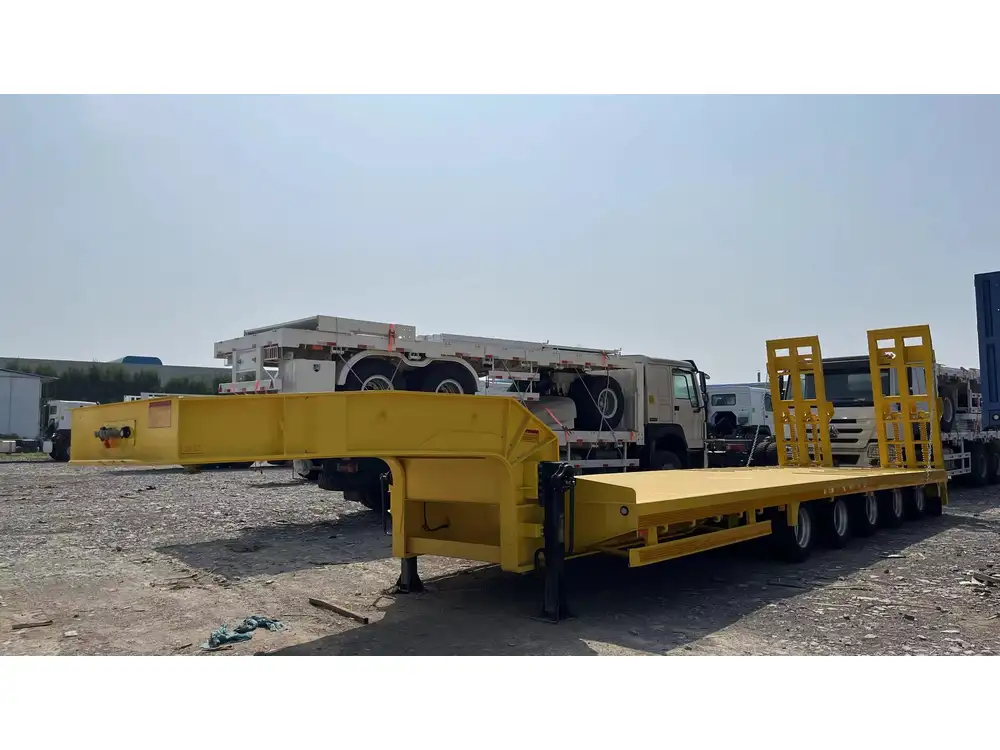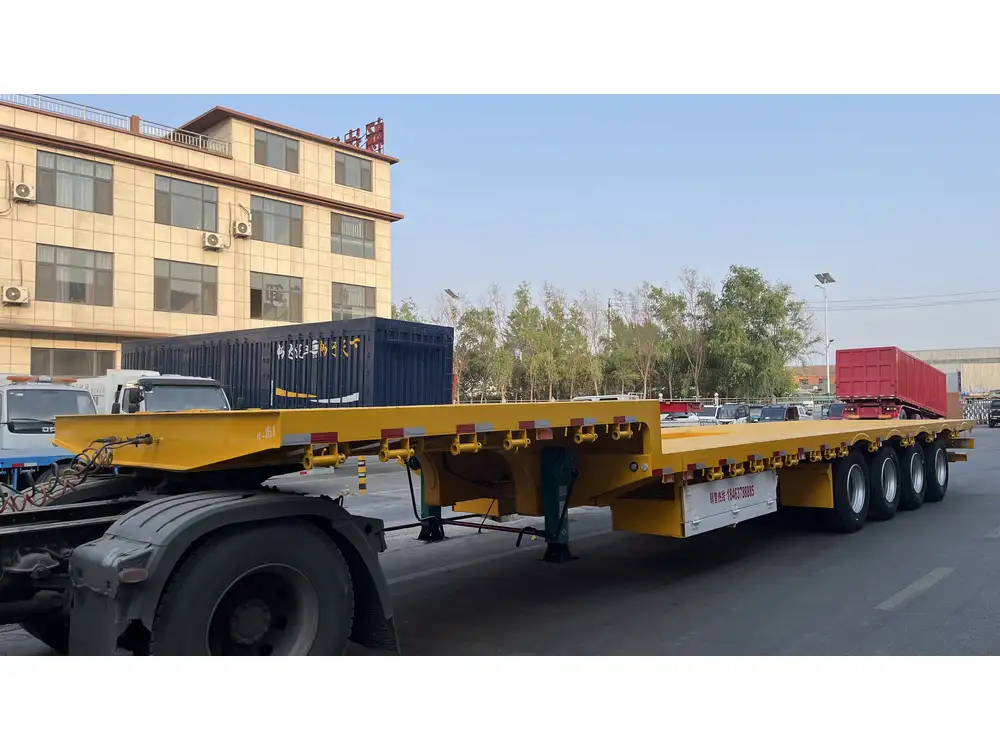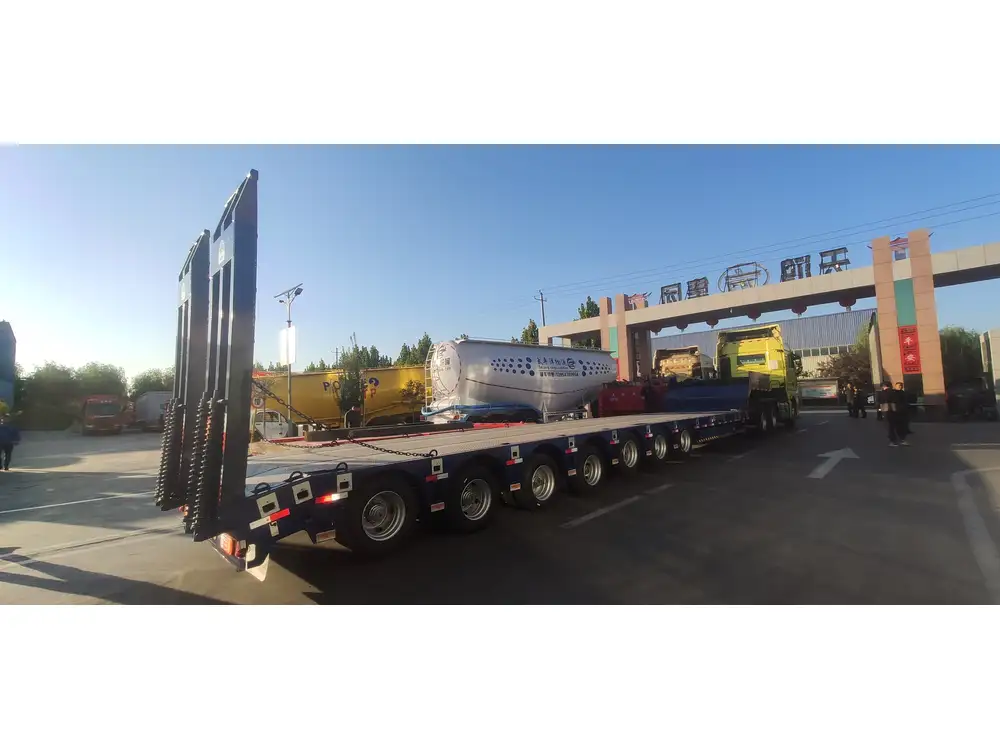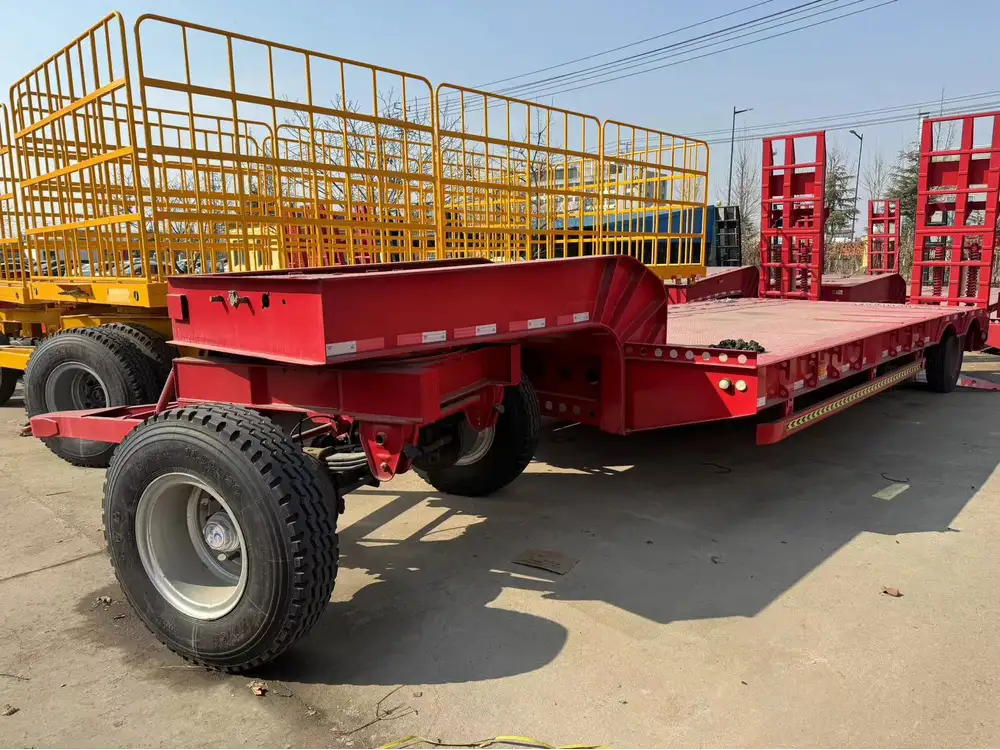The Essential Role of Trucks with Trailers in Modern Transportation
In the intricate web of logistics and transportation, trucks equipped with trailers represent a pivotal cog, seamlessly connecting suppliers and consumers. Today’s economy leans heavily on these versatile vehicles, capable of transporting a myriad of goods—from agricultural produce to heavy machinery—across long distances with efficiency and reliability. In this article, we will explore the multifaceted aspects of trucks with trailers, dissecting their construction, types, applications, advantages, and critical maintenance considerations.
1. Types of Trucks with Trailers
When discussing trucks with trailers, we encounter a plethora of types, each tailored for specific applications. Understanding these different classifications is crucial for optimal utilization in various sectors.

1.1. Semi-Trailers vs. Full-Trailers
| Feature | Semi-Trailer | Full-Trailer |
|---|---|---|
| Connection Point | Hitch on the tractor | Independent axle support |
| Weight Distribution | Primarily on the tractor | Distributed across axles |
| Maneuverability | Higher due to articulation | Lower, less flexible |
| Loading Capacity | Generally higher | Limited by truck specifications |
Semi-Trailers are the most commonly utilized trailers in the freight industry due to their flexible cargo capacities and superior maneuverability. They connect to the tractor unit via a fifth wheel, allowing for a profitable balance between payload and handling.
On the other hand, Full-Trailers stand independently on their axles and are towed with a hitch. This design, while offering higher stability in certain contexts, often lacks the agility of semi-trailers, making them suitable for specific applications where loading efficiency is paramount.
1.2. Specialized Trailers
Different industries require varying types of specialized trailers designed to meet unique needs. Here are several examples:
- Flatbed Trailers: Ideal for transporting large, heavy items, such as machinery or construction materials that require accessibility from all sides.
- Refrigerated Trailers (Reefers): Essential for perishable goods, these trailers maintain a consistent temperature to ensure the integrity of the product during transit.
- Lowboy Trailers: Designed to carry oversized or heavy loads, these trailers feature a lower deck height, facilitating easier loading and unloading of equipment such as bulldozers and cranes.
2. The Composition of Trucks with Trailers
Understanding the structural dynamics of trucks with trailers is vital for appreciating their operational capabilities. Every truck-trailer combination involves a series of components that work in concert to ensure stability, safety, and efficiency.

2.1. Chassis and Frame Design
The chassis of both the truck and trailer serves as the backbone for loading and hauling dynamics. A robust frame is built to withstand substantial stress and ensure longitudinal rigidity. By analyzing the layout of the chassis, we can identify critical elements such as:
- Frame Material: Most frames are constructed from high-strength steel or aluminum alloys for weight savings without compromising durability.
- Suspension Systems: Important for load distribution and ride quality, trucks may employ air suspension, leaf springs, or other advanced systems to enhance performance over diverse terrains.
2.2. Hitching Mechanisms
The coupling system is crucial in linking the truck and trailer securely. Understanding various hitch types is essential for safety and efficiency:
- Fifth Wheel Hitches: Common in commercial trucking, providing a stable connection for semi-trailers with optimal weight distribution.
- Ball Hitches: Typically used in lighter trailers, providing a simple attachment method for personal use.
3. Operational Advantages of Trucks with Trailers
Equipping vehicles with trailers presents a multitude of operational advantages, which directly contribute to supply chain efficiency.

3.1. Enhanced Cargo Capacity
In terms of logistical efficiency, trucks with trailers dramatically increase the quantity of goods transported in a single journey. For example, a standard semi-truck with a 53-foot trailer can typically carry between 26,000 to 45,000 pounds, depending on the cargo type and regulations.
3.2. Flexibility in Transportation
The modular nature of using trucks with trailers allows operators to adjust their configurations easily. Switching between various trailers suited for distinct loads (dry van, flatbed, or refrigerated) can help businesses adapt to changing demands swiftly.
4. Maintenance Considerations for Trucks with Trailers
To maximize the efficiency and lifespan of trucks with trailers, regular and thorough maintenance is indispensable. Implementing a well-planned maintenance regime involves several key practices.

4.1. Pre-Trip Inspections
Before hitting the road, operators should conduct comprehensive pre-trip inspections that encompass the following aspects:
- Tire Condition: Ensuring that tires are adequately inflated with no visible signs of wear or damage.
- Brake Functionality: Checking brakes for immediate and smooth response to guarantee safety.
- Lights and Signals: Ensuring all lights are operational to enhance visibility and communication with other drivers.
4.2. Routine Maintenance Schedules
Implementing regular maintenance schedules can prevent substantial breakdowns and extend the vehicle’s life. The schedule might involve:
| Maintenance Task | Frequency |
|---|---|
| Oil Changes | Every 10,000 miles |
| Brake Inspections | Every 5,000 miles |
| Tire Rotations | Every 6,000 miles |
| Trailer Coupling Checks | Monthly |
5. The Economic Impact of Trucks with Trailers
Trucks with trailers contribute significantly to various economic sectors. Often dubbed the backbone of freight transportation, they not only facilitate commerce but also sustain local economies by:
- Providing jobs in the logistics, manufacturing, and retail sectors.
- Supporting international trade through seamless inland transportation.
- Enabling just-in-time delivery models which boost inventory efficiency.

6. The Future of Trucks with Trailers
As technology evolves, the landscape for trucks with trailers continues to adapt. Key trends shaping the future include:
6.1. Emission Control and Sustainability
With the rise of environmental consciousness, manufacturers are focusing on developing trucks with trailers that incorporate greener technologies:
- Electric Trucks: Emerging as pivotal alternatives, electric models promise to reduce carbon footprints considerably, transitioning to sustainability.
- Alternative Fuels: The exploration of biodiesel and hydrogen fuel cells is actively being conducted to promote eco-friendly logistics.
6.2. Technological Integration
Advanced technologies such as telematics, GPS systems, and automated driving functions are revolutionizing trailer operations:
- Vehicle Tracking: Real-time data monitoring improves supply chain transparency, benefiting both operators and consumers.
- Autonomous Hauling: Research into self-driving trucks promises to reshape logistics, potentially reducing operational costs drastically while enhancing safety.

Conclusion
In summary, trucks with trailers are indispensable components of contemporary logistics, showcasing a remarkable blend of capacity, flexibility, and economic impact. Maintaining these vehicles efficiently while embracing technological advancements can further amplify their usefulness in the freight sector. Adapting to the changing landscape and understanding the nuances of various trailer types and maintenance needs empowers businesses to optimize their transportation processes. Embracing these insights not only supports seamless supply chain operations but also sets the stage for future advancements in the transport industry as we traverse the road to sustainability and efficiency.



